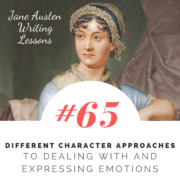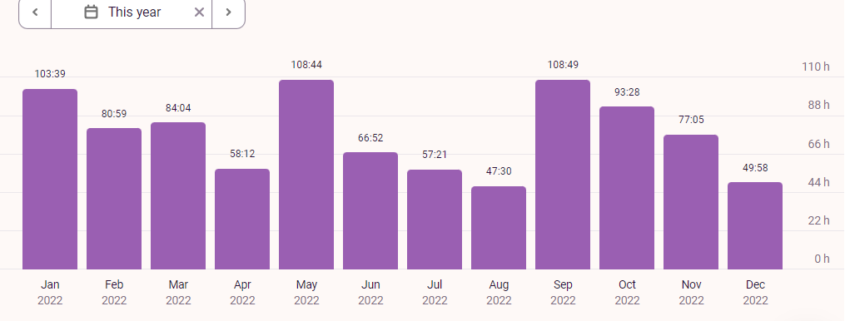Full Sized Blog Element (Big Preview Pic)
Big Mary Bennet Energy: 2022, A Year in Review
/1 Comment/in Secret Life of Miss Mary Bennet, Updates, Year in Review/by Katherine CowleyAnd now, as we reach the final day of 2022, it is time for my annual writing year in review.
I spent 937 hours writing in 2022, and my year looks like a series of waves.
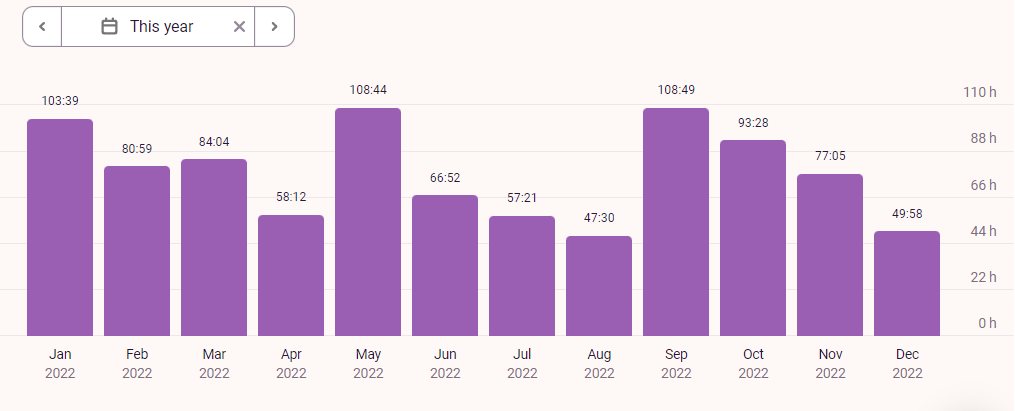
Due to a variety of outside factors, my writing time varied from 47 to 109 hours each month, but it did so in an aesthetically pleasing way, which is definitely a win.
(Note: 937 hours is less time than I spent writing in 2021, when I wrote for 1000 hours, but more than I spent writing in any previous year.)
Which leads us to the next chart: how did I spend my time?
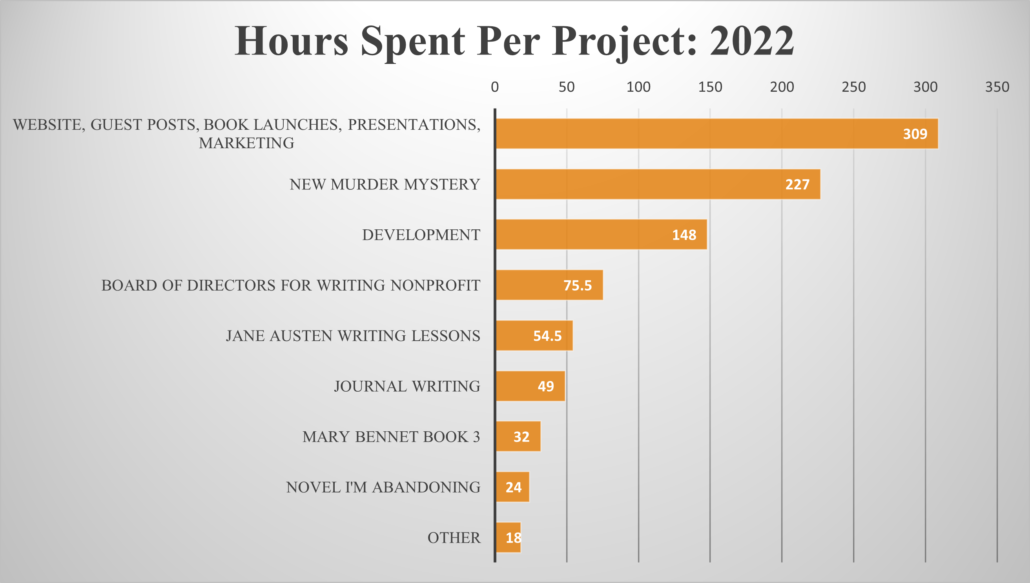
This year had big Mary Bennet energy, and that determined a lot of my writing hours. True, I only spent 32 hours doing final revisions on my third Mary Bennet novel. But the second and third books in the Mary Bennet spy series were both released:
The True Confessions of a London Spy in March 2022
The Lady’s Guide to Death and Deception in September 2022
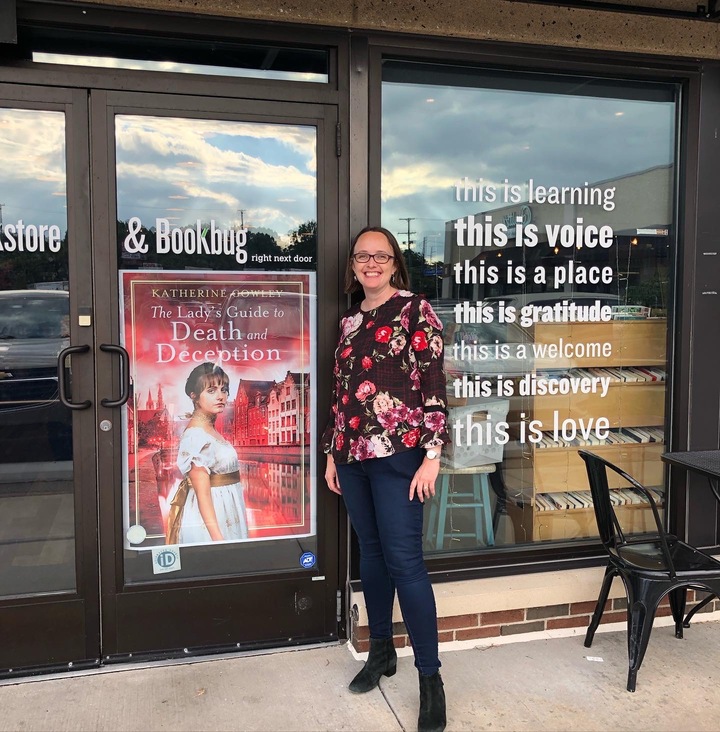
I had my launch party for The Lady’s Guide to Death and Deception at This is a Bookstore/Bookbug in Kalamazoo, MI.
It was exciting to have these books released in close proximity, because then readers could enjoy the full story arc without having to wait very long. As you’d expect, two book releases takes up a lot of time, and I spent 309 hours on everything from my website to guest blog posts to presentations to marketing tasks.
This year was also thrilling for the first book in the series, The Secret Life of Miss Mary Bennet, which had several award wins and nominations:
-Winner of the LDSPMA Praiseworthy Award for Best Suspense/Mystery novel

-One of five nominees for the Mary Higgins Clark Award
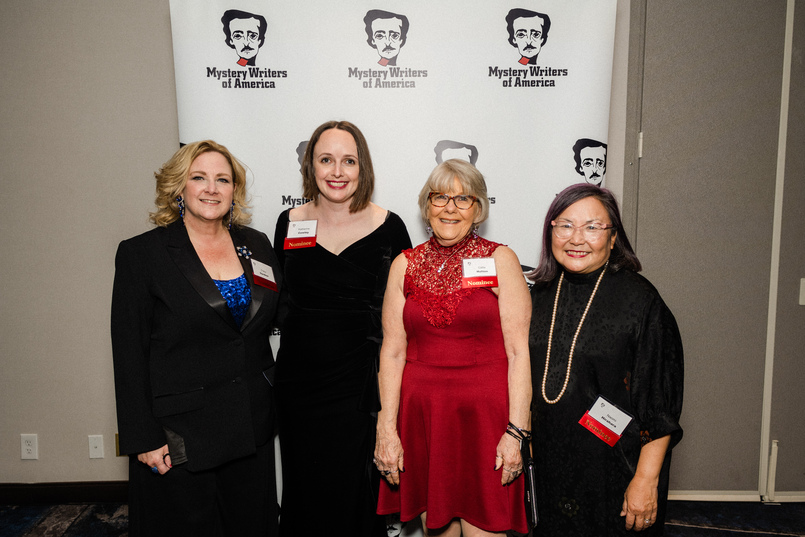
At the Edgar Awards: me with three of the other finalists for the Mary Higgins Clark Award
-One of five finalists for the Whitney Award for Best Mystery/Suspense novel
The Big Question: Will we see more of Mary Bennet?
I have had so many readers finish the third book and ask, “Will we see more of Mary Bennet?” Others have asked if I will write a Kitty Bennet series.
The series was originally conceived as a trilogy. I wanted it to feel complete and have a satisfying resolution for Mary (and company) by the end of the third book.
However, there are other stories that I would love to tell about Mary and her sisters. So I think it’s fair to say that there will very likely be more books in Mary and/or Kitty’s futures.
That said, I have been working on this series non-stop from 2017 to 2022. Five full years. That’s a lot of time to spend in one story world, with one set of characters. A book takes me at least a year or two to write, and it’s very all-consuming. So I decided that the time had come to work on a brand new murder mystery.
The New Murder Mystery:
I’m still keeping this largely under wraps, but I will say that my new murder mystery is set in Paris in the late 1800s, with a number of fascinating historical figures. The main character of the book is a determined woman in her thirties trying to make her way in the world. But then there is a theft and a murder, and she is drawn into solving the mystery.
I spent 227 hours on this book in 2022. While I had to do a lot of research for the Mary Bennet novels, I already had a strong background on Jane Austen and Regency England. I did not have that same background for my new murder mystery, so I’ve had to do a lot of additional research on everything from politics to architecture. Fortunately, I love research. One thing I didn’t count towards writing time was studying French. I’m fluent in Portuguese, and reading Portuguese definitely helps with reading French, but knew I needed to study French itself to help me read some of the sources (including newspapers and a few biographies) that are only available in French.
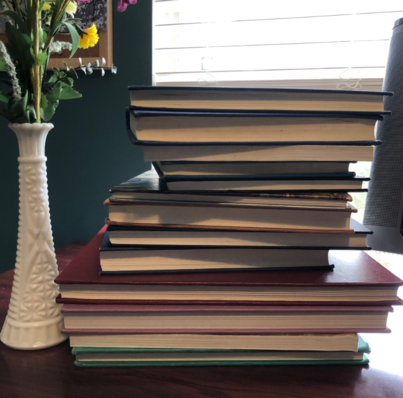
A few of the research books I’ve read for my current novel
While I love research, one cannot research forever. One of the things that I am most happy about for this year is that I found my main character’s voice, I found my narrator voice, and I found the voices of many of my other characters.
I’m now at the 60% mark on the first draft. In the new year, I plan to finish the first draft and then revise, revise, revise.
What Else Counted as Writing:
There are endless other things that counted as writing this year, but here’s a few of note:
-Choosing out formal gowns. I rented dresses for both the Edgar Awards and the Whitney Awards, and I definitely counted the dress search as writing time. (Under my Development category, which includes all writing and career development.)
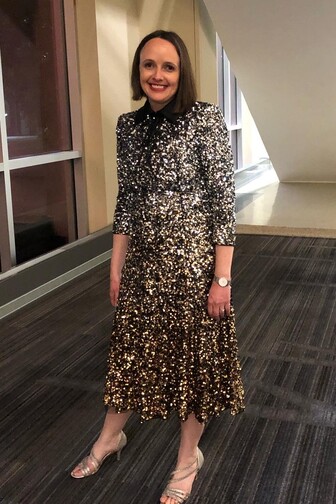
My dress for the Whitney Awards. Both my dress for the Edgars and the Whitneys were from Rent the Runway.
-I ran a successful Kickstarter for a writing nonprofit and helped publish an anthology.
-I abandoned a novel. I went back and began another revision on an old mystery novel I wrote in the mid-2010s. And then I decided it’s not the right book, so I am officially abandoning it. We’re all better off.
-I wrote 17 new Jane Austen Writing Lessons, focusing on what Jane Austen can teach us about writing dialogue and writing emotions.
-I worked on a few short stories. And I had two short stories published, both with a bit of a religious bent: “The Gift of Undoing” in Saints, Spells, and Spaceships, and the darkest story I’ve ever written, “Burdens,” in Irreantum.
My Writing Plans for 2023:
I have a number of goals, including setting up bookstore and library visits (note: if you’re a bookseller or librarian, I am available for both in-person and virtual visits).
Mostly though, I’m going to buckle down and write, so you can read more of my short stories and novels in the future.
#65: Different Character Approaches to Dealing With and Expressing Emotions
/0 Comments/in Jane Austen Writing Lessons/by Katherine Cowley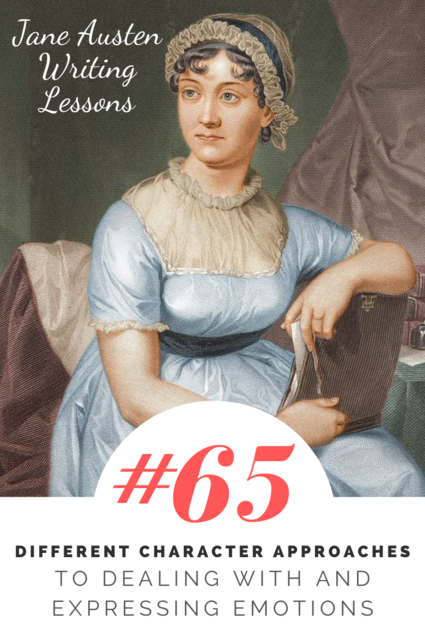
Jane Austen’s Sense and Sensibility focuses on two sisters, Elinor and Marianne, who act as foils to each other. They see the world differently; they treat relationships differently; Elinor places more value on reason while Marianne places more value on feelings and sensibility. One of the most stark contrasts between the two sisters is how they deal with their emotions and how they express them to others.
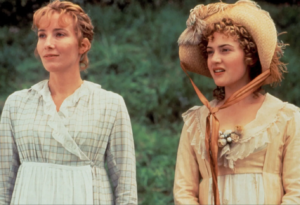
Elinor and Marianne, as depicted in the 1995 film version of Sense and Sensibility
Both Elinor and Marianne experience similar loss: they are both separated from and hurt by the men they love.
When Willoughby leaves Marianne, she has a very dramatic response, and suffers “violent affliction.” Her emotions become less violent, but they continue to be marked by outward pining and despair. She becomes very inwardly focused, not noticing the needs or circumstances of those around her, and she makes a scene at a London ball when she sees Willoughby. After he marries someone else, goes out in bad weather and becomes deathly ill.
When Elinor discovers that Edward Ferrars is secretly engaged to Lucy Steele (through Lucy confiding in her), she suffers intense pain, but she refuses to outwardly show it to Lucy. And then she continues to mask her emotions with her family, even though doing so pains her. She knows that Marianne is suffering, and she doesn’t want to add any more burdens to her family by sharing her own suffering; furthermore, she is bound by a promise she has made to Lucy Steele, and because of that promise she does not know how to share her pain with those closest to her. Yet because she is a point of view character, as readers we see and understand her suffering and her internal angst.

Elinor and Marianne, as depicted in the 2008 Sense and Sensibility miniseries
These two characters react to similar situations differently because of their contrasting personalities and because of different outside circumstances. In addition to considering how the same character will express small, medium, and large emotions differently, writers should consider how different characters deal with and express their emotions.
Later, when it becomes public knowledge that Edward is engaged to Lucy Steele, Marianne is in complete shock. But she notices that her sister is not surprised.
“How long has this been known to you, Elinor? has he written to you?”
“I have known it these four months. When Lucy first came to Barton Park last November, she told me in confidence of her engagement.”
At these words, Marianne’s eyes expressed the astonishment which her lips could not utter. After a pause of wonder, she exclaimed—
“Four months!—Have you known of this four months?”
Elinor confirmed it.
“What! while attending me in all my misery, has this been on your heart? And I have reproached you for being happy!”
“It was not fit that you should then know how much I was the reverse!”
“Four months!” cried Marianne again. “So calm! so cheerful! How have you been supported?”
Marianne struggles to understand how Elinor’s outward reality could be in such contrast to her inward reality, because for Marianne, her inward and outward realities are typically aligned.
To Marianne’s question, Elinor responds:
“By feeling that I was doing my duty.—My promise to Lucy, obliged me to be secret. I owed it to her, therefore, to avoid giving any hint of the truth; and I owed it to my family and friends, not to create in them a solicitude about me, which it could not be in my power to satisfy.”
Marianne seemed much struck.
“I have very often wished to undeceive yourself and my mother,” added Elinor; “and once or twice I have attempted it;—but without betraying my trust, I never could have convinced you.”
“Four months! and yet you loved him!”
“Yes. But I did not love only him; and while the comfort of others was dear to me, I was glad to spare them from knowing how much I felt. Now, I can think and speak of it with little emotion. I would not have you suffer on my account; for I assure you I no longer suffer materially myself. I have many things to support me. I am not conscious of having provoked the disappointment by any imprudence of my own, I have borne it as much as possible without spreading it farther.”
Elinor goes on to tell Marianne how she has forgiven Edward and does not blame him. Then she says:
“Edward will marry Lucy; he will marry a woman superior in person and understanding to half her sex; and time and habit will teach him to forget that he ever thought another superior to her.”
Marianne cannot accept that her sister could reach such a point if she truly and fully loved Edward:
“If such is your way of thinking,” said Marianne, “if the loss of what is most valued is so easily to be made up by something else, your resolution, your self-command, are, perhaps, a little less to be wondered at.—They are brought more within my comprehension.”
But Elinor will not accept Marianne’s judgment. She rebukes Marianne, in essence saying that she has loved and felt as deeply as Marianne:
“I understand you. You do not suppose that I have ever felt much. For four months, Marianne, I have had all this hanging on my mind, without being at liberty to speak of it to a single creature; knowing that it would make you and my mother most unhappy whenever it were explained to you, yet unable to prepare you for it in the least. It was told me,—it was in a manner forced on me by the very person herself, whose prior engagement ruined all my prospects; and told me, as I thought, with triumph. This person’s suspicions, therefore, I have had to oppose, by endeavouring to appear indifferent where I have been most deeply interested; and it has not been only once; I have had her hopes and exultation to listen to again and again. I have known myself to be divided from Edward for ever, without hearing one circumstance that could make me less desire the connection. Nothing has proved him unworthy; nor has anything declared him indifferent to me. I have had to contend against the unkindness of his sister, and the insolence of his mother; and have suffered the punishment of an attachment, without enjoying its advantages. And all this has been going on at a time, when, as you know too well, it has not been my only unhappiness. If you can think me capable of ever feeling, surely you may suppose that I have suffered now. The composure of mind with which I have brought myself at present to consider the matter, the consolation that I have been willing to admit, have been the effect of constant and painful exertion; they did not spring up of themselves; they did not occur to relieve my spirits at first. No, Marianne. Then, if I had not been bound to silence, perhaps nothing could have kept me entirely—not even what I owed to my dearest friends—from openly showing that I was very unhappy.”
Marianne was quite subdued.
“Oh! Elinor,” she cried, “you have made me hate myself for ever.—How barbarous have I been to you!—you, who have been my only comfort, who have borne with me in all my misery, who have seemed to be only suffering for me!—Is this my gratitude?—Is this the only return I can make you?—Because your merit cries out upon myself, I have been trying to do it away.”
This is a powerful scene between the two sisters, in part because their different approaches to dealing with and expressing emotions requires them to reconcile with each other.
When writing character emotions, it’s important to remember that there is a full range of ways a character can react to the same event: a more dramatic, outward expression or a quieter, more internal expression could both be used for either large or small emotions. A more “emotional” character, like Marianne, does not actually have more emotions—they simply express them in a different manner. It is important to note, however, that the way a character chooses to express their emotions does have consequences: Marianne pining for months does have negative effects on her well-being, and prevents her from dealing with her emotions and facing the truth about Willoughby.
There are a full range of possibilities responses in between these two opposite approaches: there are endless ways a character might deal with or express their emotions. There is no guide, no rule on whether your character should express emotions in a big or small manner, an internal or an external way: this is something you have to choose for each character, and this choice will reveal a lot about the individual and their circumstances.

Exercise 1: Write a scene with two characters. They can be siblings, friends, coworkers, or have something else that ties them together and creates similarities between them. In the scene, have something negative happen to both of the characters. The two characters should deal with and express their emotions in different ways (they do not need to be polarly opposite in their reactions, but they can be).
Exercise 2: Write a second scene with two characters with something in common—they can be the same characters from exercise 1, or new characters. In this scene, have something positive happen to both of the characters. Once again, have the characters deal with and express their emotions in different ways.
Exercise 3: Choose a handful of people in your life that you know well or interact with on a regular basis. For each person, write a several sentence sketch about how they deal with and express their emotions.
Then reflect on the differences between these people, and how their reactions are impacted by their personalities and circumstances.


